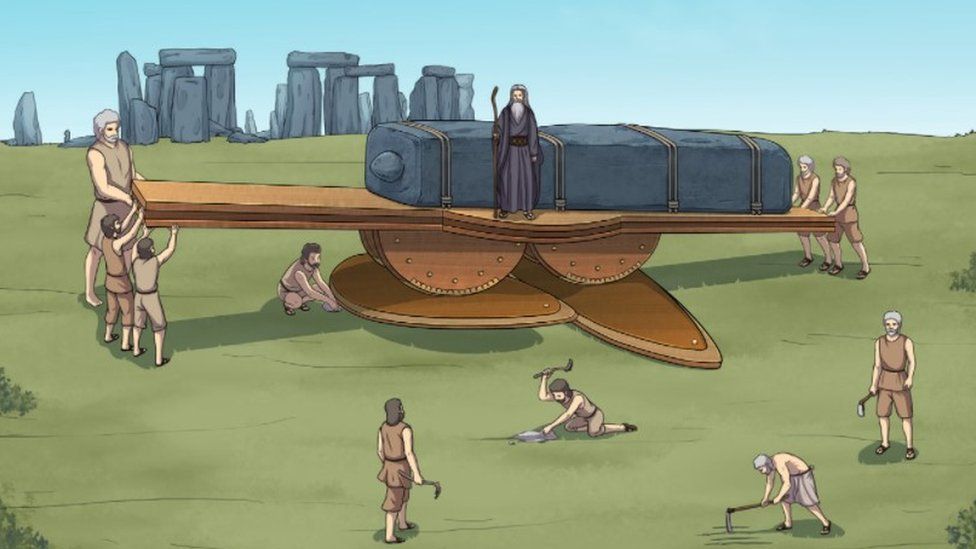
It is a mystery that has confounded experts for centuries - how were huge stones transported 180 miles (290km) from the Preseli Hills to Stonehenge?
Some think humans, or even cows, pulled them to their resting place on Salisbury Plain.
However, a Denbighshire man believes it was a long-forgotten "machine" which appeared to defy gravity and was even possibly referenced in the Bible.
A leading expert said his theory was "as good as any, and better than most".
"It may look like something out of Last of the Summer Wine, but we've lifted a third of a tonne with it and theoretically it could move any weight," said carpet fitter Steven Tasker, 66, from Llanrhaeadr.
A lover of Ancient Egypt, Steven wanted to explain how the Pyramids were built - but believes his theory also sheds light on how stone circles were created on various sites, from Orkney's Skara Brae to Stonehenge.
It was on a trip to Cairo in 2004 that he started to consider whether some ancient artefacts were not what they appeared to be.
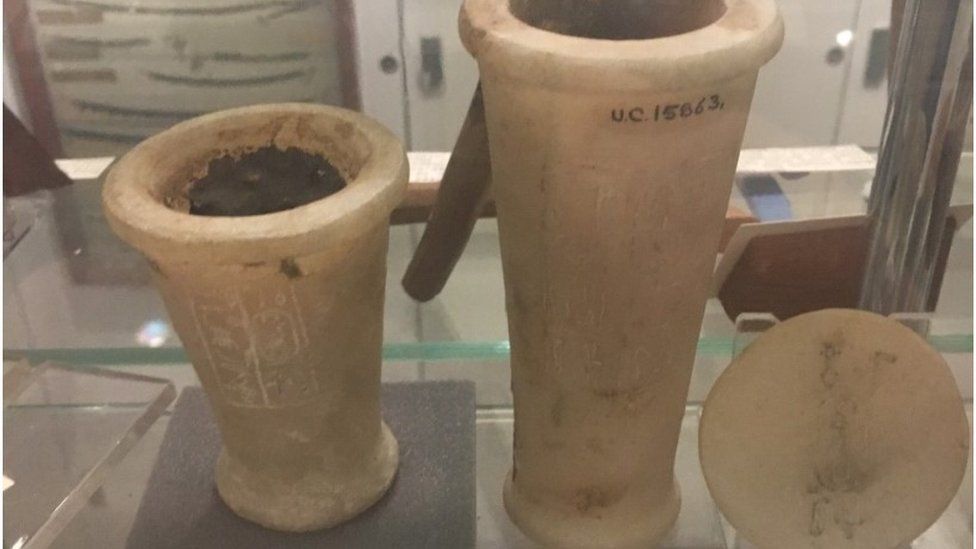
For example, what looked like eye make-up jars could have been stone rollers to help move objects.
There were also "rockers" assumed to be sleds for pulling items - however, Steven believes they could also be part of this complex machine.
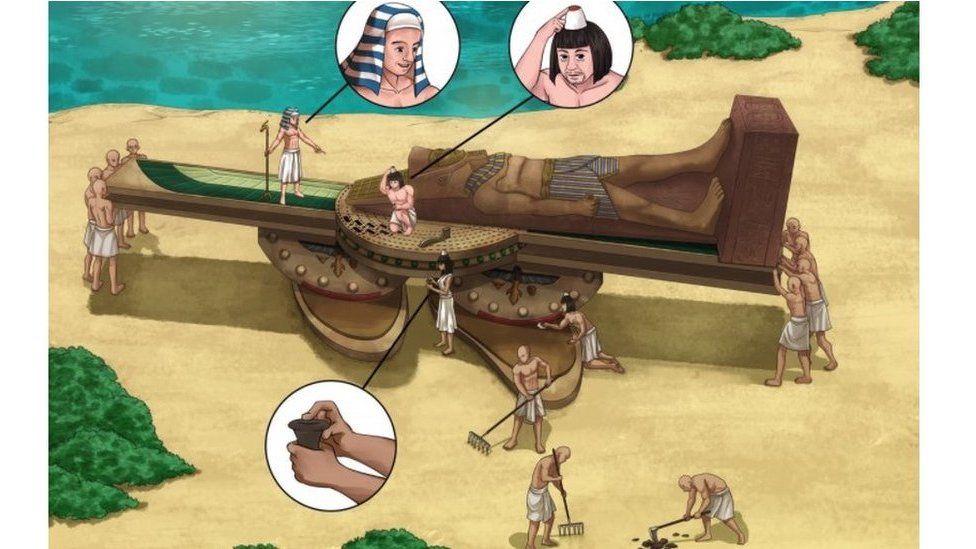
"I tied rockers below a plank of wood to try and work out how they could have been used," he said.
"By using pivot points, I could counterbalance a 60kg roll of carpet on top and by using the rockers, walk it across the road.
"Pictures of statues are of them being dragged on sleds. But all statues have flat backs, so this machine would be an easy way to transport them, whatever the weight. A small team of men could do it."
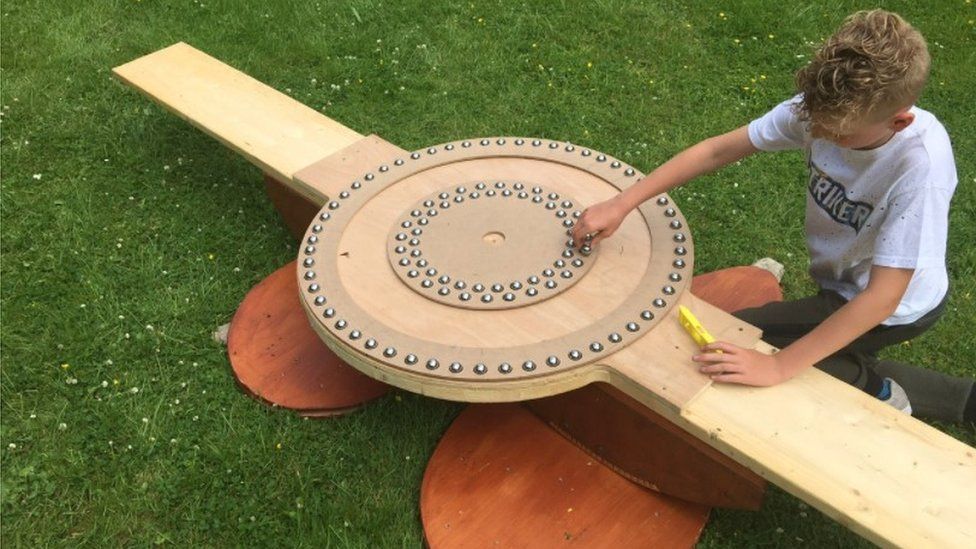
Despite his beliefs, Steven's prototype gathered dust in his garage for 14 years, until 2018, when he went on a tour with Dr Campbell Price, curator of one of the UK's largest Egyptology collections at Manchester Museum.
Dr Price was impressed with his theory and invited him to give a talk, which encouraged Steven to continue researching.
A chance encounter at a holiday cottage, when he flicked through a copy of the Old Testament, then helped him form a clearer image of how the machine looked.
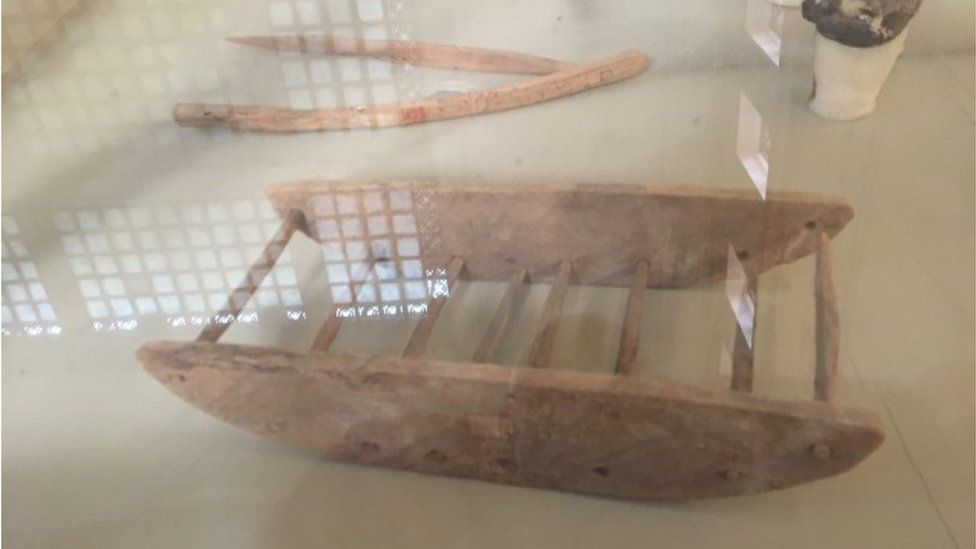

In one passage, a prophet called Ezekiel describes a "vision of God being transported on cherubim", with four wings and "feet shaped like the sole of a calf's foot".
People were worshipping idols and unaware of science in 900BC, with Steven believing this is how the seemingly gravity-defying machine appeared.
The "four wings" being planks of wood moving either side, while the idea of "calf's feet" helped him further develop his prototype.
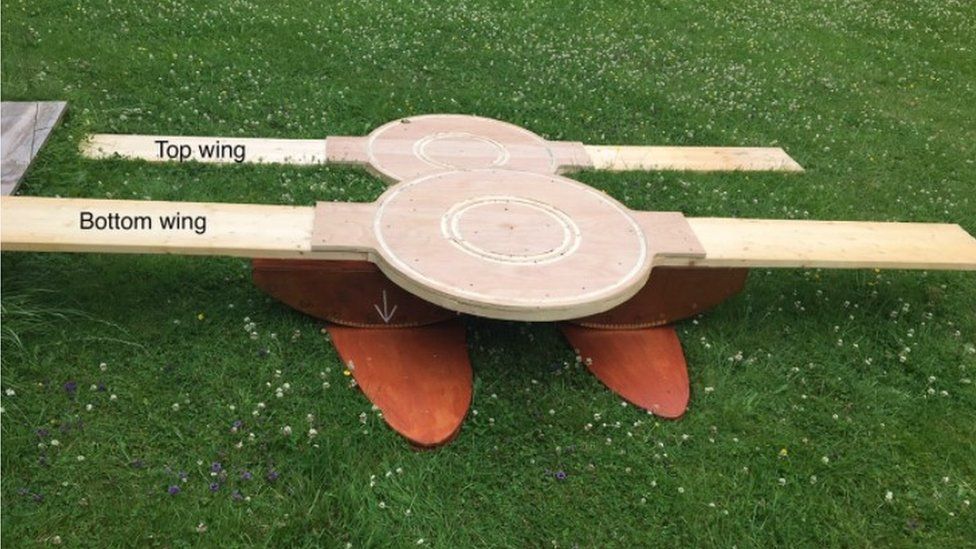

"They (the feet) are an important part of the machine because the load's centre of mass is retained over them," he said.
"It gives the impression the machine is defying gravity, but like any trick of the eye, a clown leaning forward with his big shoes, it looks like magic."
Where did it originate?
Statues weighing 1,200 tonnes were transported in Ancient Egypt, leading Steven to believe the machine originated there.
However, the Standing Stones of Stenness, Orkney, which are 6m (19ft) tall, date back to 3,200 BC - 400 years before the Pyramids.
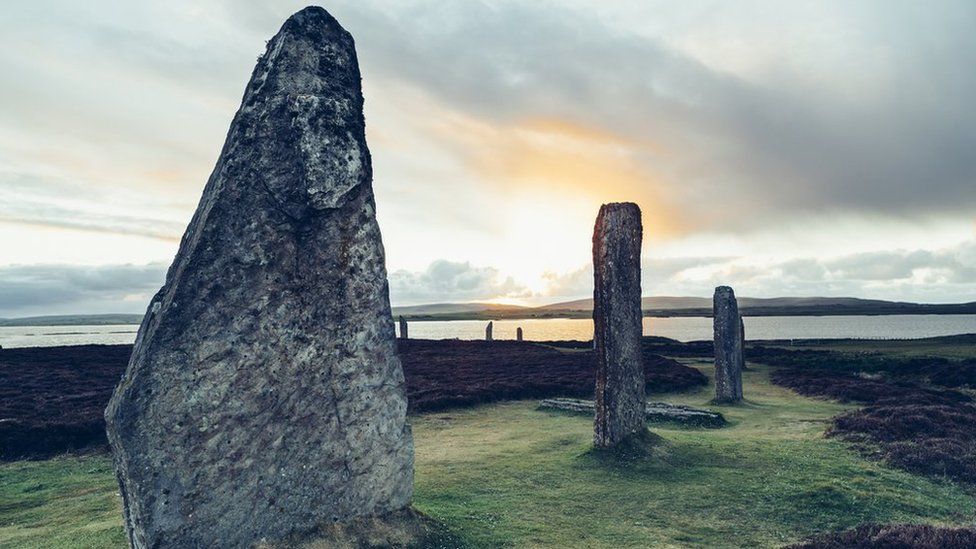
Egyptologist Laird Scranton found DNA of animal and plant species on Orkney, that led him to believe a group of Egyptian priests arrived in northern Scotland and other parts of the world to establish centres of learning.
They then taught people about seasons, farming and agriculture, he suggested.
"To do this you need a seasonal clock, thus stone circles," Steven said.
"In essence Stonehenge and stone circles are cosmological timepieces. They were used to take man from a society based on hunter gatherers, to a kingship society based on farming and animal husbandry."
How was Stonehenge created?
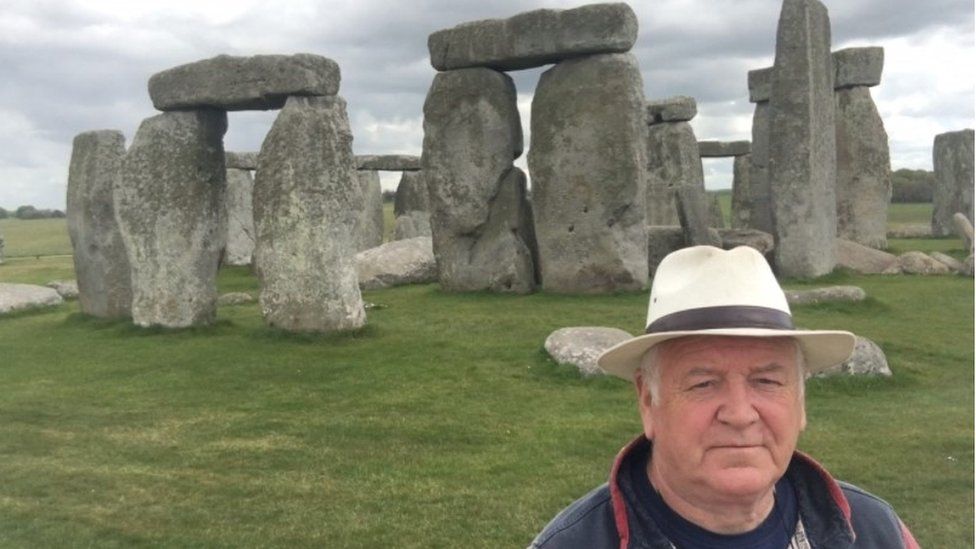
Steven believes large stones were moved throughout Britain to act as clocks, calendars and temples, with Stonehenge one of the most significant sites.
He estimates the machine would be able to travel 1.5 miles (2.4km) a day - meaning stones could be moved from the Preseli mountains in months.
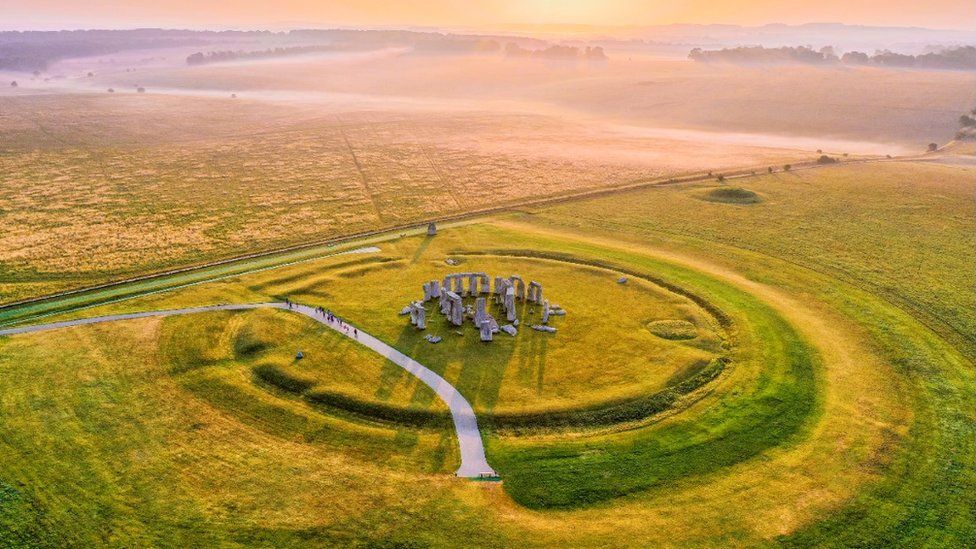
What sets Stonehenge apart is the circle around it, containing 56 chalk pits known as the Aubrey Holes.
Steven believes this could be a giant diagram of the board in the middle of the machine.
The Aubrey holes would represent ball bearings to hold statues in place, as efforts were made to improve it.
What do experts say?
Engineer Shaun Whitehead, who led the Djedi robotic exploration of the Great Pyramid, said: "I'm often approached by people who have their own ideas about why and how these great structures were built.
"I'm careful not to dismiss any of these without a little thought, but most can be shown to be unworkable or impractical.
"However, Steven's theories on how massive objects could have been moved demonstrate a very creative and practical engineering mind."
While he said nobody knows for sure how they were moved, Steven's idea is "as good as any, and better than most".

He added: "In Steven's theories, ancient Egyptian symbols such as the Djed pillar may not just be magical or spiritual representations - they may represent engineering devices.
"This makes sense - there was very little distinction between engineering genius and magic in ancient times."
Dr Campbell Price said the "efficient movement of large numbers of ancient monuments" has never been fully explained.
"Steve's experiments give a different perspective into how ancient people were able to plan paths of least resistance, and to manipulate natural forces," he added.
Influencer Jahannah James also explained the theory, saying: "In the same way that I believe many ancient cultures viewed men of science as gods or magicians, maybe Merlin was an engineer and had magicked over the stones from Wales using science, engineering and some ingenious method that we have forgotten about."
"machine" - Google News
July 04, 2021 at 03:00PM
https://ift.tt/3jHeghy
Stonehenge: Did ancient 'machine' move stones from Wales? - BBC News
"machine" - Google News
https://ift.tt/2VUJ7uS
https://ift.tt/2SvsFPt
Bagikan Berita Ini















0 Response to "Stonehenge: Did ancient 'machine' move stones from Wales? - BBC News"
Post a Comment